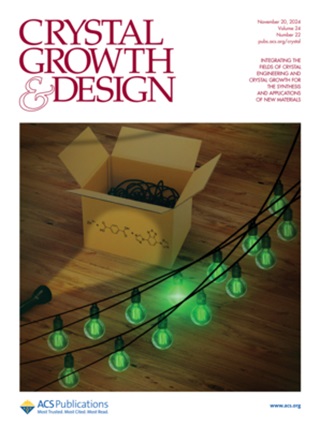汞配合物中 Hg-Cl 钠键/σ/π-孔/非共价相互作用的重要意义及纳米电子/电导应用:DFT 光谱的启示
IF 3.4
2区 化学
Q2 CHEMISTRY, MULTIDISCIPLINARY
引用次数: 0
摘要
本研究在 CH3OH 和 CH3OH/DCM 介质中使用富含 LO 的配体(富含 LO = LO-VAN/LET-VAN)合成了两种汞配合物(1-2)。配合物 1 是离散的 [(HgCl2)3LO-VAN],而配合物 2 则是配位聚合物 (CP) [HgCl2LET-VAN]n。利用光谱、SCXRD、HRMS、PXRD、SEM-EDX 和 XPS 研究对这些配合物进行了表征。X 射线结构显示,1 结晶于单斜空间群 P21/c,由[(HgCl2)3LO-VAN]的孤立三核单元构建而成。同样,2 结晶于单斜空间群 P21/n,由[HgCl2LET-VAN]n 的多核单元组成。Hg(II) 中心具有良好的立体化学特征,并且是五配位的,形成了三棱(1)和方形双锥几何结构(2)。研究人员使用高斯 09 在 B3LYP/LanL2DZ 理论水平上对 DFT-D3 进行了研究,以探索汞配合物的 FMO/MEP/NBO 和 ELF-LOL 图谱。利用 Hirshfeld 表面和二维指纹图分析了 H--H、H--O/O--H 和 H-Cl/Cl-H 接触。FMO 能隙解释了复合物的导电性和纳米电子应用。表面电子电荷的转移通过 NBO 得到了解释。ELF-LOL 曲线显示了该复合物的卓越稳定性。通过 DFT 研究了钠键(SpBs)/σ-/π 孔和非共价相互作用的存在。通过 QTAIM 和 NCI 图分析了 Hg-Cl SpBs 的性质和强度。研究结果表明,SpBs 表现出弱的非共价相互作用,其特征是键临界点 (BCP)、键路径和密度梯度降低 (RDG) 等值面。MEP 表面显示汞原子上存在 σ-/π 孔,这有利于定向 SpB 的形成。在这里,相互作用能的性质受到 SpB 的影响,并同时形成额外的非共价相互作用,如 π 堆积和 CH---π, O 接触。研究主要强调了σ-/π-孔相互作用在通过自组装形成汞复合物中的重要性。本文章由计算机程序翻译,如有差异,请以英文原文为准。

On the Significant Importance of Hg···Cl Spodium Bonding/σ/π-Hole/Noncovalent Interactions and Nanoelectronic/Conductivity Applications in Mercury Complexes: Insights from DFT Spectrum
This work synthesized two Hg complexes (1–2) using a LO-rich ligand (LO-rich = LO-VAN/LET-VAN) in CH3OH and CH3OH/DCM media. Complex 1 is discrete [(HgCl2)3LO-VAN], while 2 is the coordination polymer (CP) [HgCl2LET-VAN]n. The complexes were characterized using spectroscopy, SCXRD, HRMS, PXRD, SEM-EDX, and XPS study. The X-ray structure revealed that 1 crystallizes in the monoclinic space group P21/c and is built from isolated trinuclear units of [(HgCl2)3LO-VAN]. Similarly, 2 crystallizes in the monoclinic space group P21/n, having polynuclear units of [HgCl2LET-VAN]n. The Hg(II) center has favorable stereochemical features and is five-coordinated, creating trigonal (1) and square bipyramidal geometries (2). DFT-D3 at the B3LYP/LanL2DZ level of theory using Gaussian 09 was used to explore the FMO/MEP/NBO and ELF-LOL plot of Hg complexes. Hirshfeld surface and 2D fingerprint plots were used to analyze the H···H, H···O/O···H, and H···Cl/Cl···H contacts. The FMO energy gap explains the complex’s conductivity and nanoelectronic applications. The transfer of electronic charge on the surface has been explained through NBO. ELF-LOL profile demonstrates exceptional complex stability. The existence of spodium bonding (SpBs)/σ-/π-holes and noncovalent interactions was investigated by DFT. The nature and strength of the Hg···Cl SpBs were analyzed by QTAIM and an NCI plot. The findings revealed that SpBs exhibit weak noncovalent interactions characterized by bond critical points (BCPs), bond paths, and reduced density gradient (RDG) iso-surfaces. The MEP surface demonstrated the presence of σ-/π-holes at the Hg atoms, facilitating directional SpB formation. Herein, the nature of the interaction energies is influenced by SpBs and the concurrent formation of additional noncovalent interactions such as π-stacking and CH···π, O contacts. Primarily, the research emphasizes the importance of σ-/π-hole interactions in forming mercury complexes through self-assembly.
求助全文
通过发布文献求助,成功后即可免费获取论文全文。
去求助
来源期刊

Crystal Growth & Design
化学-材料科学:综合
CiteScore
6.30
自引率
10.50%
发文量
650
审稿时长
1.9 months
期刊介绍:
The aim of Crystal Growth & Design is to stimulate crossfertilization of knowledge among scientists and engineers working in the fields of crystal growth, crystal engineering, and the industrial application of crystalline materials.
Crystal Growth & Design publishes theoretical and experimental studies of the physical, chemical, and biological phenomena and processes related to the design, growth, and application of crystalline materials. Synergistic approaches originating from different disciplines and technologies and integrating the fields of crystal growth, crystal engineering, intermolecular interactions, and industrial application are encouraged.
 求助内容:
求助内容: 应助结果提醒方式:
应助结果提醒方式:


